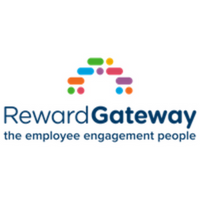How to support employees and align your reward strategy with changes to workforce planning

The reality is though, many organisations are resetting their business strategies and are unlikely to have huge budgets for these programmes, even though the role and need for HR is greater than ever. It’s clear from the conversations we’ve been having with businesses and HR leaders that operational budgets are thin, but there is definitely pressure to do something more for employees, who are experiencing mental, emotional and physical fatigue after a really tough year.
So how do you move forward and make sure that you're giving your people the best benefits you can during changes in the current climate and to the workforce?
Here are a few things we can learn from the best employers who are innovating their employee rewards in order to stand out from their competitors and meet the needs of their workforce:
1. Start with your people
By making assumptions on what your people want rather than asking for their feedback and taking their lifestyle needs into consideration, you run the risk of low engagement and a weak EVP. Taking the time to ask, listen to and measure what your workforce really values will help ensure your investment and efforts aren’t wasted.
Using surveys and platform analytics to get feedback from different areas of the business is key. While external benchmarking is important when it comes to designing benefits offerings, ensuring they are truly relevant will improve take-up and longevity of a benefits programme. Use pulse surveys and hold regular meetings to gather feedback on employee satisfaction with their level of benefits.
2. Increase diversity in your benefits offering
Look at your organisation’s benefits offering to see how it could provide a more rounded approach to reward for your employees to aid engagement and motivation.
Benefits are not a one-size-fits-all solution. Workforces are becoming increasingly diverse and multi-generational. Consider how diverse your team is in terms of age and lifestyle. Does your range of employee benefits cater to their different needs and interests? While some people in your business will quickly jump onto benefits like exclusive or discounted access to fashion and entertainment, others may want savings on everyday expenses like groceries and household necessities.
To improve your benefits strategy, make your range as extensive as possible, and cater to the different demographics within your workforce. Identify key areas where you are being asked to provide support and look at new, innovative employee benefits that will make a difference to your teams and your people.
Remember, too, that employee benefits affect more than just the individual employee, but their families as well. Ask yourself if your benefits are providing extra support that extends beyond individual need, and consider ideas such as an extension of your EAP programme or a discounts benefit that can provide savings for everyone in the family.
3. Take a holistic and long-term approach
Expanding your offering doesn’t necessarily mean increasing investment, but rather shifting or being creative with your current budget. Look for ways to support different areas of your employees’ lives. It could be by leveraging your buying power and amplifying their disposable income by offering an everyday employee discounts programme, encouraging free peer-to-peer recognition, or setting up an internal mentoring programme.
Developing a holistic benefits package helps to build a strong employer brand that people can connect with and trust, fuelling your attraction and retention strategies to nurture a positive culture that employees are proud of.
4. Provide flexibility and the power to choose
Although a large selection of employee rewards is important, providing flexibility when accessing certain benefits is important too. As your employees go through different personal and professional milestones, their priorities will change. Employers who can offer benefits that are personalised and convenient set their employee experience and employer brand above the rest.
5. Give them something to get excited about
Communicating your employee rewards programme shouldn’t be boring – if you want to get your people excited about what you’re offering, then get creative and have some fun! Share the stories and shout out from every internal communication channel about how your employees are using their benefits – for example, we offer a wellbeing benefit and encourage our employees to share what they’re spending their wellbeing allowance on to spark interest in the next enrolment window.
Videos are hugely popular too, so my recommendation is to make sure you have a platform that can facilitate an online presence to provide your people with information regardless of where they work.
6. Prioritise instant access and 24/7 support
Employee experience is something that leading employers are mad about, so it makes sense that user experience should be front of mind when building a world-class employee rewards programme. Choice, mobility, immediacy, and 24/7 support is pretty standard now for our everyday experiences.
For those seeking higher adoption rates for their benefits programme, instant access is key – we have a generation of employees who expect almost everything to run like Netflix or Amazon; they want immediacy and personalisation. Can your employees easily access their benefits and rewards when they actually need them? When providing something like an employee discounts programme, you want your people to enjoy that benefit anytime, anywhere. This may mean putting all the information about your employee benefits on one mobile-friendly site, or providing an app so employees can access benefits on the go.
If they need assistance, can you or your employee benefits provider offer real-time support outside business hours? Our research shows providing employees with 24/7 real-time support when accessing their employee engagement platform helps to increase usage and the overall impact of the benefits programme. As an employer, consider how you can support your people when they need it most.
Taking any of these six steps to ensure your employee rewards strategy is aligned to any changes in workforce planning can make a tangible and positive impact to the employee experience in your organisation, help to attract top talent, and support your people to set them up for success – now, and in the future.
The author is Robert Hicks, group HR director at Reward Gateway.
This article is provided by Reward Gateway.
Supplied by REBA Associate Member, Reward Gateway
We help the world's leading companies with an employee engagement platform.







